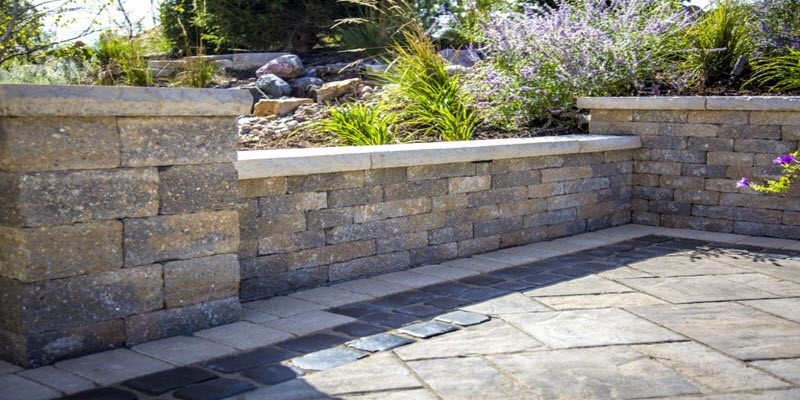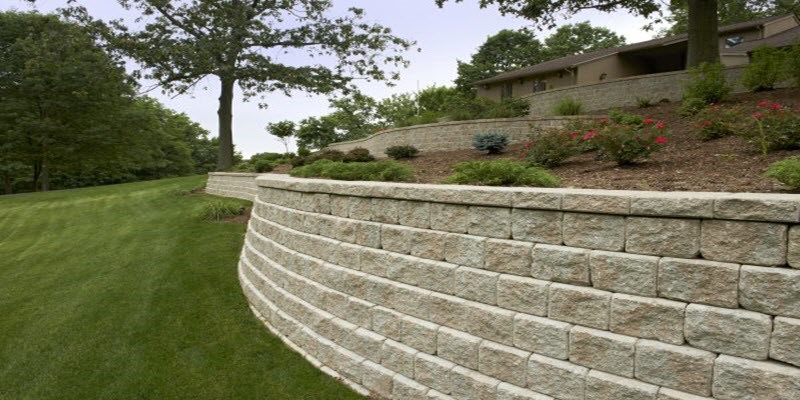DIY Retaining Walls Construction
Constructing a DIY retaining wall isn’t a job to be taken lightly. To ensure the wall is stable and safe, it’s important to use materials that are engineered to the wall’s specifications, and then to construct the wall correctly. In this guide, we will demystify the process and give you straight forward tips to follow for safe DIY retaining wall construction.
Although you can install a retaining wall yourself, we still recommend calling in a professional. If, after reading the steps below you’re not sure or aren’t feeling 100% confident about tackling this project alone, consider consulting with a professional first. You can still do much of the work yourself with some expert input.
What Do We Mean by Retaining Walls?
The goal of this guide is to help you understand the process of building a retaining wall. These walls aren’t just intended to look pretty, but to provide functionality to your landscape by holding back hills and managing water or drainage. They’re larger than garden walls and you must take more care to ensure they are installed properly. Keep in mind that every manufacturer has different guidelines for how the walls should be used, with heights varying everywhere from two feet to six feet.
Materials You Need for a Retaining Wall
Retaining walls aren’t just stone. Here are the most common materials you’ll need for complete construction:
- Gravel: This is the base and back fill material. You’ll need enough gravel to fill 4 to 8 inches of the base of the wall. Then you’ll need drainage stone for the back fill.
- Filter fabric: Without filter fabric your wall won’t last very long. It keeps the gravel separated from the top soil to ensure good drainage.
- Stones: You should choose a manufactured stone that is engineered for larger retaining walls. The size of stone doesn’t actually matter, rather it’s more the specification and design of the stones as listed by the manufacturer.
Step by Step DIY Retaining Wall Installation Guide
Once you have the design confirmed and materials you need, it’s time to start the process of building your retaining wall. Here are our recommended steps:
- Excavation. Mark out where your wall will be and remove sod and other landscaping from this area. Excavate the trench to the correct depth, based on the desired height of the wall. We can help you determine how deep you’ll need to dig for your wall.
- Add Base Material. Line the excavated area with a non-woven filter fabric and add base material in the trench directly on the fabric. Compact the trench using hand tools or machinery and add in the base gravel. Compact the gravel in lifts of 4” at a time to ensure a solid base.
- Level. Add the first layer of stones in the trench. Ensure each individual stone is level and that the base layer is level as a whole. Any small variance here will impact the wall substantially as you build. Now place the drainage pipe directly behind the first layer of stone and slope it slightly to a low area to drain. Continue to backfill the wall with drainage stone over top of the drainage pipe up to the first layer of stone. Compact the drainage stone backfill for stability.
- Stack Appropriately. Continue adding stone and backfill layer by layer. Continue until the wall has reached the height you planned for. By the time you see a curve in your wall, it is too late to fix it. You should stop building and get a professional’s advice immediately. A curve means that your materials or stack method is improper, and you are putting yourself at risk if you leave it.
- Cap Stone and Back Fill. Once everything is stabilized and at the correct finished height, you can add the cap stones to the wall to add a decorative finish. Finish backfilling with drainage stone where necessary according to your design and wrap your fabric over top of the drainage stone and compact once again. Complete the wall by adding topsoil and grade to the desired contour.
- Clean up. Tidy up the area around the retaining wall, double checking the finish and clearing away any debris or tools.
Get Professional Advice Anytime
While it’s enjoyable and rewarding to construct a retaining wall yourself, you don’t want to take chances with your safety or the safety of others. Your DIY retaining wall construction isn’t complete until you’ve had a professional inspect your work so be sure to reach out to a trusted source such as Grand River Natural Stone for final approval.
Need help to complete your wall? We can help you with every aspect of DIY retaining wall construction. Reach out to us at Grand River Natural Stone today.

